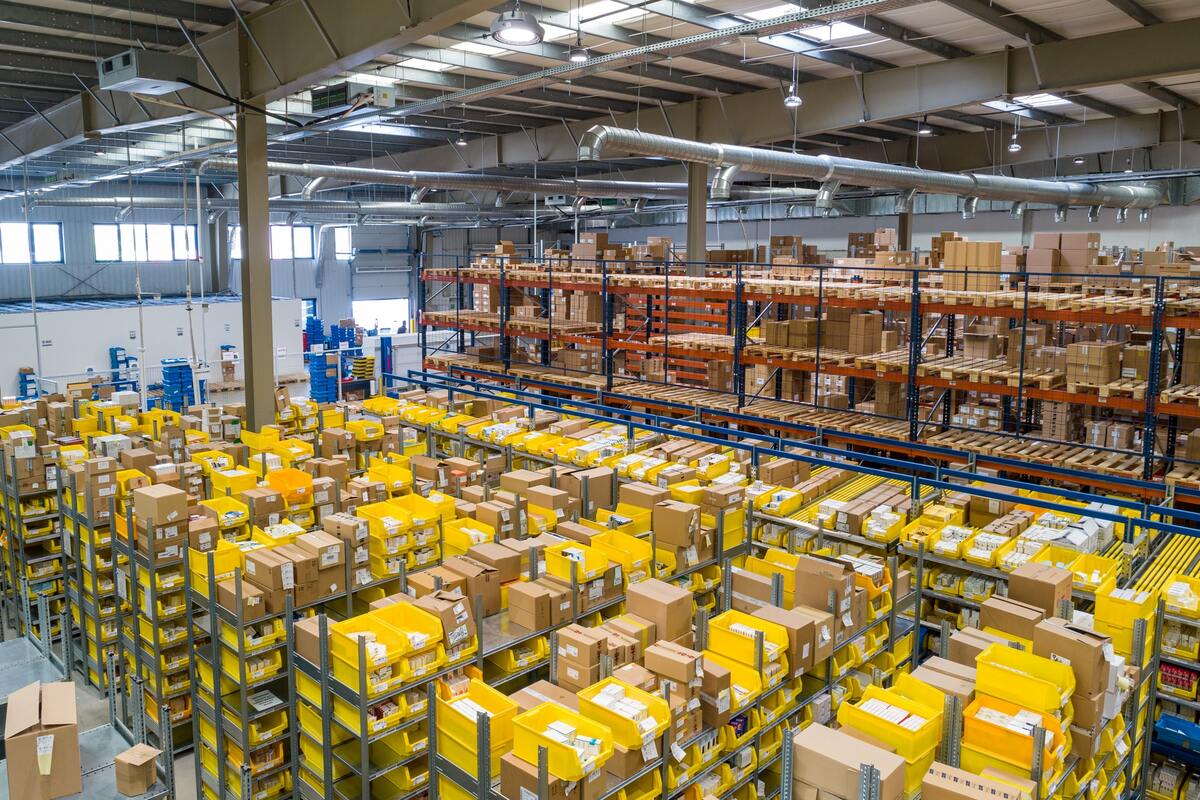Warehouse construction is soaring — Can we make them sustainable?

Warehouses are growing in popularity as extra shipping centers or business offices. Online shopping grew by 43% in 2020 because of the pandemic, so warehouse demand has increased. With such a boom in business, construction professionals must consider making more sustainable buildings.
Why is warehouse construction rising?
One of the reasons for this is increased shipping operations. There were rising demands for supplies after the pandemic. Truck drivers and ships couldn't cross borders due to health restrictions, which led to a pent-up market during lockdowns. So, to handle larger orders, more warehouses need to be built.
Additionally, there has been an increase in online sales. Many retailers need larger warehouses to store their online shipments. The U.S. will need to add 330 million square feet of warehouse space dedicated to online fulfillment by 2025. The shift in online purchases could likely be due to the pandemic and technological increases. Many people now order supplies and groceries all from their laptops. With next-day or same-day delivery, online shopping is a popular trend.
The increased job growth is another factor. In June, the US added 372,000 more jobs. With this growing economy, additional warehouses are necessary to store products. Also, technology has made telecommuting easier. Some business owners need less office space and more room for their online inventory.
How to make these buildings more eco-friendly
With increased economic growth and consumer demand, warehouse construction is rising. Here are a few strategies construction professionals can keep an eye on to make them more sustainable.
1. Pick a Good Location
The placement of warehouses can impact their sustainability. Some of the energy used in the construction industry is from transportation, so having distribution centers near urban zones can reduce movement in and out of the building. Choose a location close to highways and airports for quick travel, which lowers carbon emissions.
Employees will then have shorter work commutes and can rely on public transportation. A central building reduces the need for additional water pipes and utility lines — and manufacturing these items wastes energy and releases greenhouse gasses.
2. Incorporate fans
Cooling and heating systems can be less efficient in warehouses with more expansive spaces. However, high-volume fans can help keep air moving, reducing the energy usage of current HVAC systems. Perform regular maintenance and inspections to ensure the system is running correctly — an inefficient one is vulnerable to breakdowns and can raise utility bills.
Another way to stabilize heat loss or gain is to conduct a thermal inspection. Use an infrared imaging technique and scan the walls to find areas for improvement.
3. Use eco-friendly building materials
Use materials with less polluting qualities like specialized paints, adhesives and sealants. These can also improve the space's indoor air quality. Look for paints with low volatile organic compounds as well.
Stone, bamboo and cork are eco-friendly supplies to use. Another vital tip is adding insulation — it can prevent energy leaks and keep the space at a consistent temperature. To get started, determine your area's best thermal performance or R-value.
4. Add a cool roof
A cool roof can help lower the temperature inside the warehouse. This prevents the air conditioner from wasting energy in the summer. To add this type of roof, use light-colored reflective materials. Painting the ceiling white is also beneficial, as it then reflects sunlight instead of absorbing it.
A cool roof even reduces the urban heat island effect. This is where cities are warmer than the surrounding area. Another thing to think about is adding solar panels to the roof. These can reduce carbon emissions, lower energy bills and reduce reliance on fossil fuels. Tax deductions for companies can offset the higher initial purchase price.
5. Conserve water
Water-efficient landscaping can reduce the effects of water scarcity. People everywhere rely on water for agricultural and hygiene purposes. To conserve water, consider rainwater harvesting and sensors to monitor usage.
Invest in low-flow faucets for bathroom or satiation stations. Add stormwater drainage systems as well. These prevent water from entering municipal stormwater areas, fields or ponds.
6. Get green certifications
These programs give construction managers approval and guidance on what measures to take. Leadership in Energy and Environmental Design is a popular certification with different levels. The program can help keep designs consistent and streamline building processes.
Green certification can help managers reach their own sustainability goals. Another eco-friendly initiative is the International WELL Building Institute, which promotes health and well-being for employees.
7. Add energy-efficient lighting
Changing lighting is a simple and cost-effective way to go green. Switch from traditional fluorescent lights to LED bulbs. Look for Energy-Star rated ones that use at least 75% less energy and last longer. They even have reduced heat emission and faster reaction times.
Think about installing motion sensor lights to reduce energy usage and remember LED bulbs have a higher upfront cost but provide long-term savings.
Improving warehouse sustainability
Due to increased demand and online sales, warehouse demand has increased. That is why it’s essential to consider making them more sustainable. Picking the right location and adding energy-efficient features is critical.



